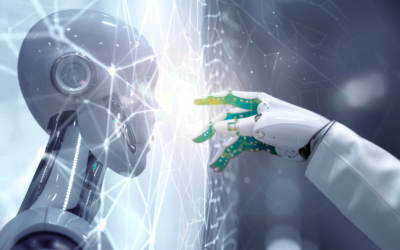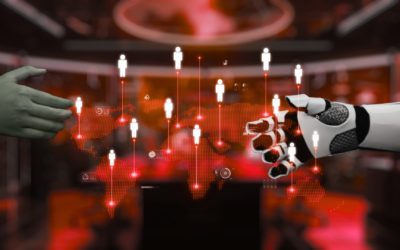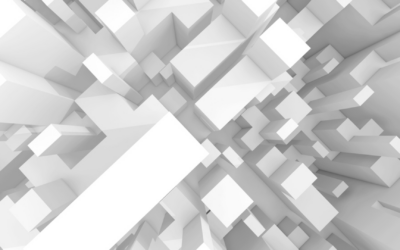At The Crossroads Of Progress: Where New Tech, Industry Trends And Human-Centered Design Converge
-
discover
-
Featured
The intersection of technology advancements, industry trends and human-centered design is more of an endless roundabout than an orderly 4-way stop. These critical elements of technological progress are complementary and interdependent, but not perfectly so — and the degree to which they align dictates how smoothly the traffic flows and whether we get anywhere worth going.
It’s the classic chicken-egg conundrum: Which comes first, the capability or the use-case, the technology or the trend? And where exactly do human needs and desires come into the equation? Generally, industry trends develop with the emergence of exciting new technology. Once the trend is established, it becomes a self-perpetuating loop, with more resources dumped back into further developing the tech, boosting the trend, which in turn demands further tech development. It’s the creative engine of the free market, and it drives the mind blowing speed and staggering growth we’ve witnessed in the 20th and 21st centuries.
Usually, this new technology is an attempt to address a gap in the market, fulfilling an identified need for the betterment of mankind. But sometimes, technology seems to spring, unbidden, from the fecund minds of genius technologists, with no clear application or purpose. Without the guiding parameters of actual, real human needs and values, we risk (at best) developing unwanted products that don’t sell — and at worst, technology completely at odds with human values: the dreaded Paper-clip Maximizing world-ending scenario of AI X-risk doomers.
Human-Centered Design puts people at the center of the tech development process, and helps us avoid either scenario. When it isn’t a part of development from the very beginning of the process, the end product is unlikely to be actually useful, serve unmet needs, or align with human values.
When tech, trends and people align
If we really lean into the ‘progress as journey’ analogy: technology is the car that can take us to exciting new places, industry trends are the roads to get us there and the cities that spring up along the new routes — and human-centered design is the people driving the cars, using the roads, and living in those cities.
How these three variables interact determines whether we have fast and efficient cars sailing down smooth roads, bringing happy people into the gleaming cities of the future — or barren stretches of empty asphalt leading nowhere, high-tech cars stacked up in parking lots driving in circles, and stranded pedestrians waiting fruitlessly for better options.
But these three elements don’t always converge seamlessly. Here are three examples of how technological progress can hit some speed bumps.
Scenario #1: I’ve got a fast car (but nowhere to go and no one to drive there)
In 2024 it’s basically unthinkable to write about technology and trends without mentioning AI. And it’s a prime example of a brand new technology sparking an explosion in reactive and adaptive industry strategies. In fact, some might argue it’s a technology in search of a use-case. Sure, a million apps and APIs are being launched to apply AI to existing workflows and business practices (and everything else) — but with the tech still in its infancy, many of those uses smack of ‘square-peg/round-hole’ syndrome.
At the moment, AI fits scenario #1: We’ve got this amazing, fast, hi-tech car — but the roads are still being built, leading in a million directions with no clear destination, and people are still trying to figure out if the cars are safe or going anywhere useful.
This isn’t a knock on AI (quite the opposite, we are HUGE fans of AI over here and are always looking for new ways to incorporate it): these are merely the awkward growing pains of a brand spanking-new technology evolving and searching for its niche. As the technology matures, the best uses will emerge.
Scenario #2: Suppose you threw a party and nobody came?
Sometimes, you have a vision, a grand vision of the future. You get to work building the technology, but it’s trickier than originally thought, not quite what you dreamed, maybe a little underwhelming in execution. But after all those sunk costs, there’s no turning back, you press forward, do a big launch and promotion … and nobody cares.
This is scenario #2, where a dream of a promising new technology sets off a tsunami of industry hype, everybody in the business gets excited, it’s the next big thing — only to be met by lackluster technological performance and even worse, a collective shrug by the consumer.
A good example here? Immersive reality technologies like AR and VR. Metaverse, I’m looking at you.
That’s not to say this tech will never catch on. There are plenty of fun and silly uses (looking ridiculous while playing BeatSaber or exploring Google Earth definitely has its charms) and potentially many more. Once the tech ‘cars’ get good enough, more riders will be convinced to hop on board, move to the metaverse, and abandon meatspace to Humanity 1.0 once and for all. At the moment, this seems to be a case of an industry trend getting ahead of both the technology and what the humans at the center of it all actually want.
Scenario #3: Bags packed, ready to go … where’s the Uber?!
The final scenario is the most frustrating, but holds the most promise. This is when industry trends are fully aligned with human needs, and have taken Human-Centered Design to heart — but the technology just isn’t there yet.
The prime example here might be renewables and sustainability. The critical need for developing in this direction is understood. Humanity and human values — you know, continued survival on planet Earth and all that good stuff — lie at the very center of the industry. Buzzwords like net zero! carbon capture! bioengineering! fly fast and furious in the trade rags. But progress, actual technical progress, has been slow.
In other words: we can see the shining city on the hill, we desperately want to get there, the road signs are all pointing the way … we’re just waiting for a vehicle that can get us there.
Where it all converges
Technological progress is never easy: dead ends and cul-de-sacs and bridges to nowhere abound. But when things go right, when technological innovation and industry strategy aligns with Human-Centered Design, it feels almost like magic. Like speeding down an empty ribbon of highway, wind in your hair, into the sunset to the promised land.
EX Squared sits squarely at the confluence of technology, industry trends and human needs. Kind of like a traffic cop, we know the roads, we understand where people want to go, and we make sure they get there. We combine our cutting-edge digital know-how with our deep understanding of people and their behavior. It’s why big brands count on us to drive their digital experiences into the future.
If you’re ready to hit the road and looking for a navigator, give us a shout. We’ll bring the road snacks!
Talk with us
EX Squared is a creative technology agency that creates digital products for real human beings.



